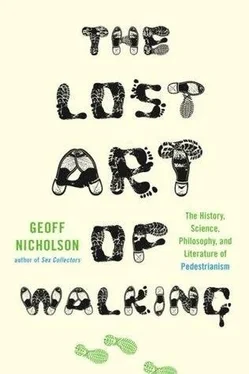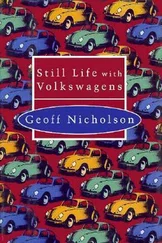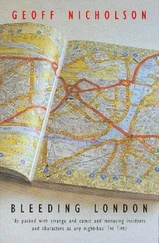Absurd and unlikely juxtapositions are par for the course. They’re expected and welcomed. By now we know that any sound and any image can be put together to create some sort of meaning. If you’re walking, wandering lonely as a cloud, you might think that one of Erik Satie’s Gymnopedies would do the job, but if your iPod randomly selects some Napalm Death, then that will create its own oblique and ironic resonances, too. These may be random, but they will not be meaningless. This is something we’ve all learned from watching so many movies.
Erik Satie, incidentally, as well as being a composer, pianist, Rosicrucian, and master ironist, was also a fine, determined, obsessive walker. Every day he left his home in the suburb of Arcueil and walked to his studio in the center of Paris, then at night he walked back again. It was a substantial journey, six miles in each direction, and some of it was potentially dangerous: Satie carried a hammer for protection.
Guillaume Apollinaire tells us that Satie did a lot of composing on his nocturnal homeward walks. He would create music in his head, then stop from time to time under a convenient street-lamp and write it down in a notebook. His productivity was greatly reduced during World War One when so many Parisian streetlamps were turned off. It’s easy enough to believe that you hear the regular, repeated rhythm of the human footfall in much of Satie’s work. He also said, ‘Before I compose a piece, I walk around it several times, accompanied by myself’.
Satie’s music, alas, has become something of a cliché of the less inventive movie sound track: an instant source of knee-jerk melancholy. Imdb.com would lead you to believe that he’s one of Hollywood’s most in-demand composers. His work has appeared in movies and TV shows as diverse as The X-Files, Chocolat, The Man Who Fell to Earth, My Dinner with Andre, The Royal Tenenbaums , and The Benny Hill Show .
There is one cinematic moment, however, where Satie’s music is forever welded to an image of walking, and that is in the Hal Ashby/Jerzy Kosinski movie Being There . It’s the last scene, when the hero, Chance the gardener, played by Peter Sellers, walks on water, across a lake, to the accompaniment of a version of Satie’s Gnossiennes . The movie credits say ‘Rearranged by Johnny Man-del’, though surely ‘arranged’ would have been enough.
The scene was a spur-of-the moment invention. The script they were shooting from ended with Peter Sellers and Shirley MacLaine simply meeting each other while walking in the woods. Compared with seeing the hero walk on water, this was obviously tame stuff. Ashby found walking on water was a surprisingly easy movie effect to pull off. He got the technical details from Robert Downey Sr., who’d done something similar in his movie Greaser’s Palace .
All you need is a certain kind of mobile platform that can be found at airports — you sink it below the surface of the water so that it can’t be seen, and then any actor can take a short straight walk along it and appear to be doing some miraculous aquatic pedestrianism. In Being There the narrowness of the track also allowed Sellers to poke an umbrella into the water just a few inches away from his feet and have it sink deep below the surface, giving the impression there was no platform at all.
Another of Sellers’s great walking scenes is one in which he scarcely walks at all, as Dr. Strangelove, who having been in a wheelchair throughout, suddenly leaps up, stoked by the prospect of nuclear attack, and yells, ‘Mein Führer, I can walk!’
♦
Sellers insisted he was an actor who had no ‘true self’. He disappeared into his roles and became invisible. There is, therefore, no such thing as a ‘Peter Sellers walk’. Certain other actors are far more inclined to have a trademark stride. A few who immediately spring to mind are Charlie Chaplin, Groucho Marx, Pee-wee Herman, Arnold Schwarzenegger, John Wayne. All of these might be construed as comical: by the time a walking style has become recognizable it has also become absurd. It also seems to be a particularly male trait. The only genuinely distinctive ‘female walk’ I can think of is Marilyn Monroe’s stylized wiggle. Sometimes this is attributed to her weak ankles, but that sounds like an explanation for something that needs no explaining.
I’m one of those people who finds Charlie Chaplin largely unwatchable these days, and his walk is certainly part of what I can’t bear, its cuteness, its faux humility, its feverish attempt at ingratiation. If this sounds like too contemporary an opinion, Wyndham Lewis felt much the same about Chaplin back in 1928. His novel The Cbildermass is set in the afterlife, a world overseen by a character known as The Bailiff, who sometimes appears in the form of Chaplin. Characters in the afterlife are then forced to perform routines from Chaplin movies — it isn’t hell exactly, but it’s near enough. For Lewis this represents all that’s wrong with popular culture — it’s become no more than repetition and imitation at the expense of authenticity.
Certainly Chaplin is anything but inimitable. It’s said he based his on-screen walk on that of a real tramp, a man rejoicing in the name of Rummy Binks, who drank in a pub belonging to Chaplin’s uncle. There’s also a story, maybe an urban myth, that Chaplin once entered a Charlie Chaplin look-alike contest, and lost. One version has him saying to a reporter that he was tempted to give the contestants lessons in the Chaplin walk, ‘out of pity as well as in the desire to see the thing done correctly’.
Chaplin’s high regard for his own trademark walk was confirmed — indeed, turned into a publicity stunt — in the 1920 s, when he had his feet insured for $150,000. Is there any recorded case of anybody ever collecting on these Hollywood body-part insurance policies?
By the time of his movie Limelight , in 1952, Chaplin had transferred some of his concerns about walking onto another character. Chaplin plays Calvero, a fading comedian, and Claire Bloom plays Terry, a ballerina suffering from hysterical paralysis. There’s nothing physically wrong with her, but she can’t walk. It comes as no surprise to anybody when, late in the movie, she finds her feet again and yells, ‘Calvero! I’m walking! I’m walking!’ One must have a heart of stone to watch this scene without laughing.
The main thing that makes Limelight endurable is the brief presence of Buster Keaton. Now there’s a man who knew how to walk across the screen (as well as fall, tumble, slide, leap, swing, etc.). In Limelight he plays another fading comedian, and one who gets far, far less screen time than Chaplin. The two of them perform a creaky musical routine, with Keaton on piano, Chaplin on violin. The act is filmed very straight, very deadpan. There’s a long period at the start of the scene (two minutes or so out of a total of seven) where Keaton fumbles with his sheet music while Chaplin shows off a series of ‘funny walks’ based on the idea of having one leg shorter than the other. These are skillfully done as far as they go, but they point up a fundamental difference between the two comedians. Keaton could be funny when he walked, but he didn’t do funny walks.
For Keaton, like any good actor, the walk was not a trademark but a part of characterization. In Sherlock Jr. , for instance, he plays a would-be detective following a suspect by walking about a foot behind him, their strides interlocking. Typically Keaton’s gait is a combination of the stoic, the hesitant, the noble. He walks on, not in expectation of joy or success, certainly not in expectation of being loved like Chaplin’s ‘Little Fellow’, and yet for all the abuse and misfortune that gets heaped on him, Keaton’s walk remains brave and optimistic.
Читать дальше












